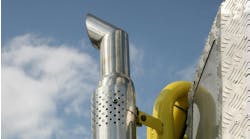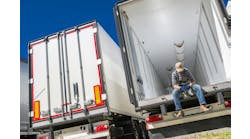Moving toward a carbon-free transportation industry feels like an endless family road trip where the parents promise that the destination is a veritable utopia, but they mapped the route poorly and keep running into construction issues, while restless kids in the back relentlessly chant, “Are we there yet?”
The “parents” here are the government and NGO climate zealots. The “kids” relegated to the back represent the industry’s hard-working professionals. And the final destination is the full-scale adoption of zero-emission vehicles. It’s the equivalent of a beach vacation several states away—where everything is unfamiliar, overpriced, and overcrowded. And when they do get there, everyone is exhausted, cranky, and wondering why they didn’t stay closer to home, where they’d have spent less time, money, and energy on the trip.
That’s how it feels to me after covering this zero-emission zeitgeist for many years, and I think a lot of fleet leaders are starting to feel the same way. Only instead of making analogies, they’re pulling the data to question the route we’re taking to a more sustainable future.
Ryder is a good example. Last year at the Advanced Clean Transportation Expo, the mega-logistics and service provider launched RyderElectric+, a turnkey service that includes the EVs, infrastructure, data, and maintenance to hasten customers’ electrification plans—with advisors there to navigate short cuts. And because Ryder was testing all the EVs in their fleet, they could offer sound guidance.
Ryder’s latest “guidance” is more reminiscent of Chief Brody from “Jaws” warning the clueless mayor to close down Amity Island beach because it’s not safe to go into the water. Only this was a white paper based on dedicated fleet data derived from 13,000 drivers, not a great white shark. It’s still gripping, nonetheless.
According to Ryder CEO Robert Sanchez, “For many of our customers, the business case for converting to EV technology just isn’t there yet, given the limitations of the technology and lack of sufficient charging infrastructure.”
Some key data from the study included a 94%, or $315,000, annual increase in total cost of transportation for a Class 8 tractor in California, while it’s a 114%, or $330,000, TCT increase in Georgia. In both states, maintenance increased for Class 8 tractors by 23%. For Class 4 vans and Class 6 straight trucks, TCT was also up, but nowhere near as dramatically, and maintenance costs went down by 22%.
Fleet leaders are pretty smart and already know this in their gut, which is probably why Sanchez said Ryder has not seen “significant adoption of this technology.” It’s likely because they’ve been doing this job for decades and this ain’t their first emissions rodeo. They know technology promising to make things better makes things harder and more expensive for a while. That they could stomach, as I really do believe they all want to make the industry more sustainable, but not if the clean technology hampers their business of moving things from Point A to B. They’re waiting for the right solutions that provide some semblance of parity with diesel trucks, which seem a ways off.
Read more: ZEV real-life use cases: Tesla Semi
“If it was easy, we’d do it—and if it was cheaper, we’d have done it already,” noted Murray Mullen, chair, sr. executive officer, and president of Mullen Group, a Canadian logistics provider, at the Truckload 2024 meeting in March. “I haven’t seen the magic [bullet] yet that reduces my cost. Every new one we’re looking at is expensive, and the best of the purest zero emission [truck] is so expensive, it’s not profitable. We need a lot of physicists and technology experts to crack the code.”
But those damn histrionic parents at the wheel have a schedule to keep. The Biden administration asserts the world faces “the gravest consequences” if emissions aren’t cut in half by 2030. But how do we get to that without bankrupting carriers and crashing the economy? These “adults in the room” need to stop and ask for directions, or reconsider the destination, but they likely fear they’d look incompetent and lose our respect. Too late on both fronts. Their failure is apparent, even if they refuse to admit it.
When host Margaret Brennan of the CBS news show “Face the Nation” asked Secretary of Transportation Pete Buttigieg why only eight of the 500,000 chargers promised by 2030 have been built as part of President Biden’s $7.5 billion national EV network, he stammered an excuse about how hard it is to install chargers, what with utilities and all, and then cheerfully reiterated, “The very first handful of chargers are now already being physically built.”
If it’s so hard for the government, how difficult will it be for the millions of small fleets impacted by the EPA’s greenhouse gas rules to electrify? Or if they’re really brave, try out hydrogen, which has an even more steep path to affordability?
It’s a question no one knows yet, but we can start to figure out the answers a couple of pages over. We spoke to the real people that ZEVs will impact the most—the folks in the cab and the shop. After speaking with them, and several experts, I found ZEVs do show a lot of promise.
Read more: Lessons from a serial EV adopter
In the last mile space, they certainly have a place. Ryder agrees, as the company plans on having 4,000 Class 2 BrightDrop Zevo vans in its fleet. I recently test drove one and was thoroughly impressed by the ease of operation. It will be even better when more chargers are available and economies of scale kick in.
And in the heavy-duty space, the Tesla Semi has shown it can compete with diesels on certain routes. But if reducing emissions, not pushing ZEVs, is the real goal, would not removing the oldest, worst-polluting trucks for the latest clean ICE ones be faster and cheaper?
One last thing. Donald Trump has said if elected, he will roll back electric truck mandates, which is akin to a parent threatening “to turn this car around.” After so much time and money spent already, that too seems inefficient. Politics is all about push and pull, so maybe all the rhetoric will put us where we were meant to be: a middle ground where battery-electric, fuel cell, CNG/RNG, propane, and renewable diesel all have a place.




